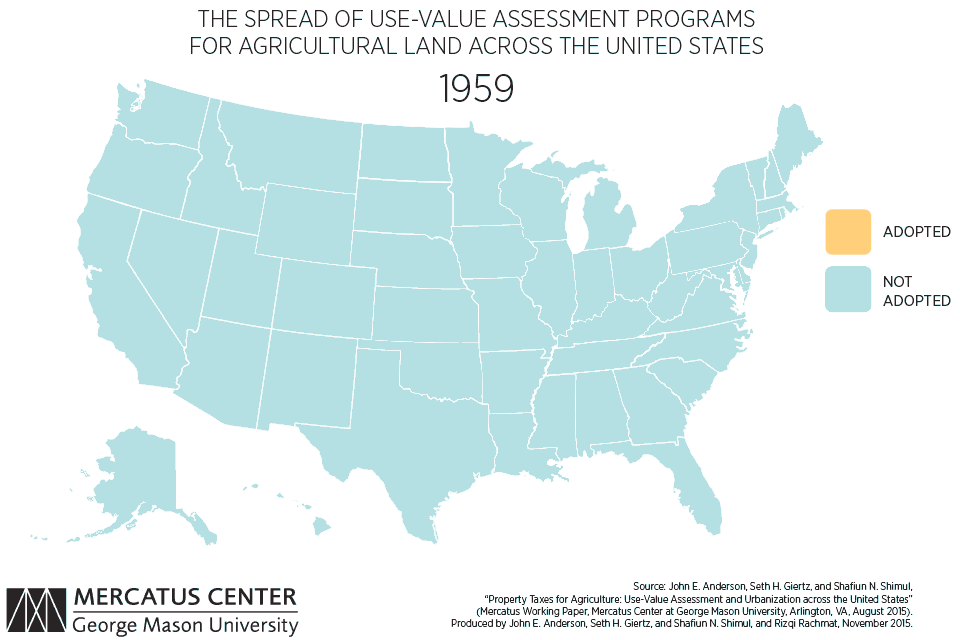- | Corporate Welfare Corporate Welfare
- | Data Visualizations Data Visualizations
- |
The Spread of Use-Value Assessment Programs for Agricultural Land Across the United States
Each state in the United States has adopted some form of UVA policy, starting with Maryland in 1960, ending with Wisconsin in 1995. While this adoption of UVA policies was driven in part by concern among policymakers about urbanization and a desire to preserve farmland, a recent study also shows that the lobbying power of agricultural interests played a role in the spread of UVA tax policy.
Agricultural land is often taxed at a much lower rate than land used for residential, commercial, or other uses. Use Value Assessment (UVA) policies tax agricultural land based on its current use value for agriculture, instead of on its full market value. Consequently, farmers get a significant property tax break that other land users do not receive.

Each state in the United States has adopted some form of UVA policy, starting with Maryland in 1960, ending with Wisconsin in 1995. While this adoption of UVA policies was driven in part by concern among policymakers about urbanization and a desire to preserve farmland, a recent study also shows that the lobbying power of agricultural interests played a role in the spread of UVA tax policy.
Agricultural groups like farmers receive most of the benefits from UVA tax preferences. These agricultural interest groups are small and easily organized, giving them an advantage when it comes to promoting preferential policies in state legislatures. This is especially the case given that other taxpayers have little incentive to object because their tax burden rises only slightly, even though the benefit to agriculture is substantial, and even if the total costs of the policies exceed their benefits.
The average farm size increased over the period, concentrating resources in fewer farmers and making it easier for agricultural interests to organize and lobby. During the same time, the share of agriculture in the state economies shrank. This decrease in the size of agriculture, relative to the rest of state economies, made the transfer of a substantial level of benefits from taxpayers to agriculture a less costly proposition in budgetary terms and a lower priority for reform.
The ultimate effect of UVA policies is preferential tax treatment for a small number of landowners, which is paid for by the rest of taxpayers. In addition, UVA policies make land artificially cheap for agricultural interests and keep land from being used for other, potentially higher-value uses. For policymakers who want to reform property taxation, reform of UVA policies would be a good starting place.

